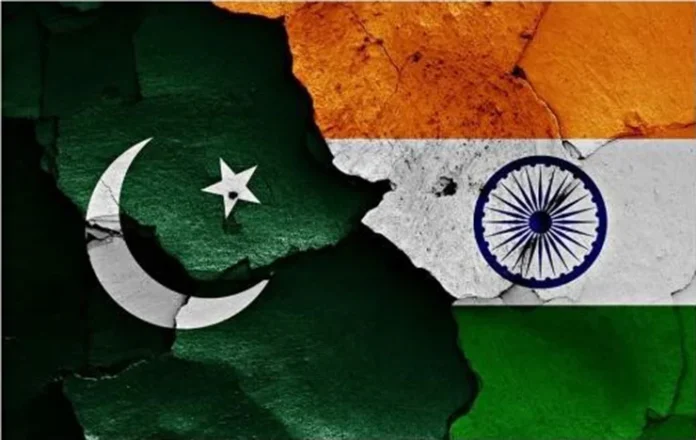Before independence, the princely state of Jammu & Kashmir had to reluctantly give up the idea of staying independent, primarily because of massive polarisation between the newly-born states of India and Pakistan. The only question that remained was when and onto which side, since the dynamics of the era didn’t leave it with a chance to chart an independent path. After the passage of more than seven decades of intense and conflict-filled history, a pause to take a look back gives a sense of what went wrong. For Pakistan, they lost out on integrating Muslim majority Kashmir, for Jammu & Kashmir, it couldn’t stay an independent nation the way it wanted, and for India, the accession was a bitter pill as it came a bit too late when almost half the territory was already lost by the rulers of Kashmir to Pakistan. At the time, it wasn’t a happy ending for anyone. It was the cruel fate that tied the region in a complex web of emotions & power struggles. It played out as a love triangle gone sour for one who couldn’t take the rejection and charted upon lifelong revenge.
Demographic Stress
The demography of Kashmir reflected less than 5 per cent of minority Kashmiri Pandits and the rest were Muslims, giving it the status of a Muslim-majority state. Representation in the state affairs, however, stood at almost 30 per cent for Kashmiri Pandits, as they were better educated and formed a somewhat elitist part of Kashmiri culture. The part of history from independence till the early eighties stayed rather uneventful. It was in the eighties that the Kashmir as a leftover agenda started gaining shape and momentum.

It also got impetus from the developments taking place within and beyond the region. The Sheikh Abdullah-Indira accord of 1975 is widely alleged to have given a sharp rise in dissatisfaction and perception of sell-out to India among common Kashmiris, which was encashed by both factions fighting for an independent status like JKLF and those who wanted integration with Pakistan like Jamaat-e-Islami Kashmir. Beyond the border, the Soviet invasion of Afghanistan, the involvement of Pakistan-backed Afghan Mujahideen in the war and the Islamic Revolution in Iran gave a fillip to militant uprisings in Kashmir and subsequent targeting of Kashmiri Pandits.

The Exodus
As radicalisation took roots coupled with some serious political harakiri committed by the state, Kashmir witnessed the beginning of a phase of an armed insurgency, the first to be targeted were Kashmiri Pandits. They formed a minority, defenceless and most vulnerable part of society who soon faced the wrath of armed militants, political isolation and an indifferent attitude from Delhi. While a tragedy of minority killings, loot and rape was unfolding on Kashmiri Pandits primarily committed by radicalised militants and abetted by the political class (who termed them as mukhbirs) New Delhi was busy identifying the correct nomenclature to define the impending exodus – refugees, internally displaced people or simply migrants?
There’s a lot in the name it’s said, as the former two terminologies would have created opportunities for international intervention, which New Delhi wanted to steer clear of, this time around – A case of once bitten twice shy. There are different figures about this exodus, which suggest that out of 1.4 lakh Kashmiri Pandits, approximately one lakh left the valley and around 80 were killed. The statistics compiled by the CIA fact book, an open-source of information, peg the population of Kashmiri Pandits to be around three lakh while the killings are estimated to be around 300. The essence of all these varying data is the same – targeted atrocities on Kashmiri Pandits, forced exodus in large numbers and focussed attempts towards ethnic cleansing.

Ethnic Cleansing or A Genocide
There’s no denying that Kashmiri Pandits were persecuted and forced to leave their homeland while the state looked the other way. Transforming Kashmir into a complete homogenous identity of Islamic society required getting rid of the entire Pandit community and ethnic cleansing was naturally the most favoured means to this end. Ethnic cleansing was not an innovation by Pakistan’s ISI, the world has already witnessed such catastrophic events during World War 2 when the Croatian military took actions to clear off the territory of non-Croats in what they termed as ‘cleansing the terrain’. In the most well-documented period of the Holocaust during the same period, Nazi Germany pursued a policy of ensuring that Europe was ‘cleaned of Jews’. In the 1980s, the Soviets used the term ‘ethnic cleansing’ to describe the inter-ethnic violence in Nagorno-Karabakh. History has already seen this sick but successful experimentation which became an attractive proposition for ISI’s future plans. Some also termed the events as ‘genocide’ especially as per depictions through popular films and TV documentaries are concerned. However, ethnic cleansing has been distinguished from genocide in a watershed judgement by the European Court of Human Rights on 12 July 2007, while referring to events in Bosnia and Herzegovina in which the court remarked, “The intent that characterizes genocide is ‘to destroy, in whole or in part’ a particular group, and deportation or displacement of the members of a group, even if effected by force, is not necessarily equivalent to the destruction of that group.” The argument gave credence and clarity to events leading to Kashmiri Pandits fleeing the region, which can be attributed to ethnic cleansing, but terming it genocide would be stretching the argument a bit too far.

Time to Turn the Page
The developmental indices reflect a clear shift to rapid growth; the Union Territory’s revenue collection recorded a huge 25.7 per cent growth while GDP grew by 9.58 per cent as compared to the previous year. It made the Union Territory among the top four performing states in terms of year-on-year growth. Statistics apart, some ground facts are even more jaw-dropping – Union Territory of J&K clinched a more than $10 billion investment deal with the UAE, and mentioning Pakistan here would be apt as it continues to beg IMF for a paltry $6 billion bailout package.
This year, the tourism economy is expected to shatter all previous records. The fact is Kashmir is not the same anymore, the sense of optimism is unmistakable across the sector be it industries, tourism, agriculture or infrastructure. It’s truly a remarkable effort from all government departments, private sector, entrepreneurs, biggest of all security agencies and especially the Indian Army, which forms the fulcrum of security in the valley; all have relentlessly worked with a singular focus to stabilise and reconnect this region with the national mainstream. It’s not that challenges have just vanished, but the crux of the change is democratic institutions and local administrations now stand empowered to address the issues by themselves.

Life, Livelihood and Sustenance
As per fair estimates, more than 60,000 families of Kashmiri Pandits fled the valley. Of that, 40,000 are staying in Jammu camps, 20,000 are in Delhi NCR camps, and some others are scattered across other parts of the country. Although developmental data makes an impressive read, it may not after all be inspiring enough to drive a swift comeback of Kashmiri Pandits. It’s a historical scare on their consciousness and needs to be holistically addressed, else the efforts to bring them back will not have a different fate than what happened to previous endeavours. The rapid evolution over the past half a decade coupled with some smart steps expected from the government remains the best hope. A thoughtful look at how the dynamics may be moulded to support the cause will suggest that – life, livelihood and sustenance should form the central theme this time around for the resettlement of Kashmiri Pandits.

Demonstrate the Will!
Secured residential settlements are the most basic requirements for this reverse migration to kick start. But making Israel-style Jewish settlement for Kashmiri Pandits will be like holding the matchstick from the wrong end. An assessment of places where Kashmiri Pandits are desirous to settle down would give a fair idea to the administration to bring up an aptly subsidised model and gated townships with a larger chunk kept for Kashmiri Pandits and the rest of it open for families living below the poverty line, this will prevent settlements to become community-specific.
However, the security framework should remain the responsibility of the state police only. The government must also ensure that at least one member of each family gets suitable and assured employment, and constitutional provisions of reservation for the minority in the government sector can be explored. Besides incentivising the private sector for including Kashmiri Pandits in their workforce, Kashmiri Pandits can be offered lucrative incentives to explore self-employment opportunities.
Time also calls for aggressive intervention by government, as confidence-building measures for the sustenance of these families, steps such as dual domicile status for a limited period of say 50 years, to any other state of their choice, policy for strong financial support & government jobs for next of kin of any victim of terrorism and tours of Kashmiri Pandits can be organised to expose them to current realities. These might appear somewhat audacious moves but such actions are the need of the hour to thrust them beyond the orbit of continued mental stalemate. The time has now come to visibly demonstrate the will of the state!
–The writer has varied experience in security paradigm and is a keen follower of international geopolitics. He is also the author of popular blog site (geostrat.in) on geo-strategic affairs. The views expressed are personal and do not necessarily reflect the views of Raksha Anirveda.
-The writer has varied experience in the security paradigm and is a keen follower of global geopolitics. His work has been regularly featured in national publications. Visit newsanalytics.in to access more articles from the author. The views expressed are of the writer and do not necessarily reflect the views of Raksha Anirveda
















